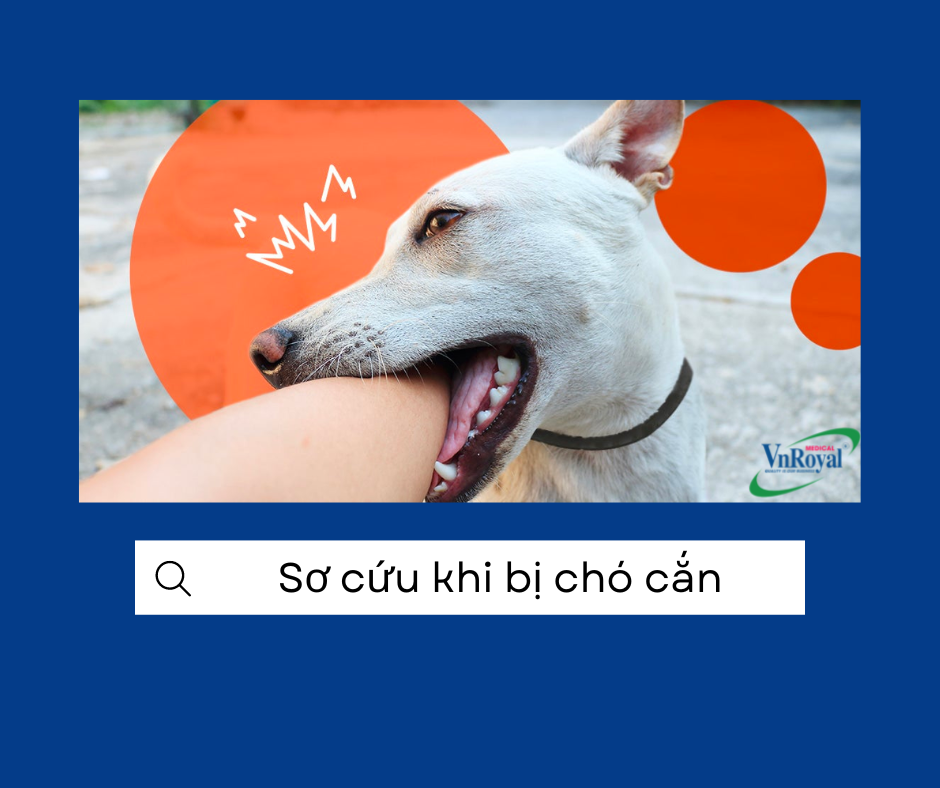Some dogs bite when they feel threatened, but others may bite when they’re roughhousing with you during a normal day’s playtime, or in situations that they’re not trained or prepared for. Whether it’s your dog or a friend’s, it’s worth thinking ahead and taking precautions to make sure no dog ever feels that it has to bite you or has the opportunity during a normal routine.

1. How to handle a dog bite in the moment
Here’s what you should do if you or someone you’re with is bitten, depending on how severe the bite is.
If someone is with you and the bite is severe, have them seek help or call 911 to get medical treatment as soon as possible.
Is the skin broken?
- Rinse the area. If possible, you should do this immediately with warm, clean water and gentle, unscented soap.
- Apply a small amount of pressure to the area. This increases bleeding temporarily and gets out excess bacteria.
- Put a cloth over the wound. This should help stop the bleeding.
- Use antibiotic lotion or ointment. Once the bleeding at the bite has slowed down, add ointment and firmly wrap it with a clean bandage.
- Change the bandage regularly. Do this especially if it bleeds through.
Skin not broken?
- Rinse the bite with warm water and soap.
- Apply an antibiotic ointment or lotion to help kill bacteria.
- Seek immediate medical attention if you notice any of the following symptoms: redness or irritation, swelling, warmth or tenderness when it’s touched, pain getting more intense, bleeding getting worse, fever, visible tissue underneath, such as bones or muscles, loss of ability to move any limbs that were bitten, injury oozes discharge or pus

2. Getting care for a dog bite
Here’s a quick rundown of what to expect from medical attention.
- A minor wound should still be examined. Even if you’ve cleaned it thoroughly and don’t have any symptoms, an exam can prevent possible infection. You may need to get a rabies or tetanus vaccine if you aren’t already vaccinated and the bite tests positive for these infections.
- Quick treatment is crucial. This is to make sure a dog bite doesn’t lead to any long-term infection risk or permanent tissue damage. A dog’s saliva can contain many types of infectious bacteria. If your bite is open and bleeding, your doctor may use surgical adhesive. They may prefer this over stitches in certain areas because your body may reject the stitches as foreign material.
In especially severe cases, your doctor may need to perform surgery. They may use a skin graft to replace any lost or damaged skin, or create a skin flap with surrounding tissue to ensure the wound heals fully.
3. Tips to prevent infection
Dogs carry bacteria in their mouths, such as CapnocytophagaTrusted Source, that can cause infections that can be dangerous or deadly if left untreated.
Here’s what to do to keep your bite from getting infected:
- Rinse the bite with water and gentle soap. Do this as soon as possible after you’ve been bitten.
- Apply antibiotic ointments. This will help kill bacteria on your skin.
- Put a bandage on the bite. Do this after you’ve cleaned it and change the bandage regularly.
- See your doctor right away. Call your doctor if you notice any symptoms of infection, which can start to appear anywhere from 24 hours after the bite up to a few weeks afterward.
Dog bites can put you at specific risk of developing rabies or tetanus infections, as well as: brain inflammation from meningitis, endocarditis, or heart infection, staph (MRSA) infection
sepsis.
4. Other things to keep in mind
Make sure you get treated for any infection symptoms. This includes fever, swelling and heat at the site of the bite, or excessive pus.
Bites on the face or the mouth can be especially risky. These should be treated quickly and properly, as infections from certain bacteria from the mouths of dogs can cause gum disease and tooth decayTrusted Source over time.
Finger or hand bites are also dangerous. The hand contains many complex blood vessels, nerves, and muscles that can be irreparably damaged.
Long-term damage can be minimized. These kinds of bites should be treated quickly, either for infectious bacteria or for wounds that may lead to visible scarring.
5. Prevention when it’s not your dog
For other people’s dogs and strays, here are some tips to avoid and prevent bites:
- Ask the owner. Don’t pet someone else’s dog unless you ask first. Let it sniff you before you attempt to pet it.
- Don’t approach an unaccompanied dog in public. If it approaches you, stay still and don’t make any sudden movements.
- Report any stray dogs. You can call your local animal control or humane society.
- Watch for signs of hostility or anxiety. This includes baring teeth, growling, barking, and ears or fur standing up straight as well as whining, putting their tail between their legs, and yawning loudly.
- Don’t panic or run away if a dog starts chasing you. Face it head on and try to make yourself look bigger while still trying to keep your distance. If a dog knocks you over, curl into a ball with your head tucked and your arms over your ears and neck.